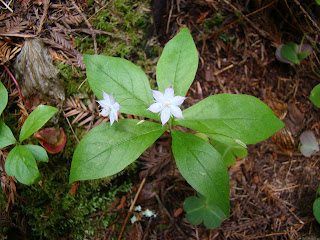Epilobium or willowherb in the Redwood forest
Willowherb is a very common plants that can be observed everywhere: meadows, forests, disturbed places, commons, etc. This plant has long avoided identification but finally it is there. So let's look closer at this interesting plant.
Willowherb also known as epilobium belongs to the Evening primrose family (Onagraceae). The flowers of this family have 4 petals and 4 sepals. The stigma has 4 lobes at the end that look like a cross. The stigma is longer than stamens. There are many species of epilobium. The most common around here is Epilobium parviflorum. It is an erect plant about a foot tall with small pink flowers. Each flower has 4 petals that are dissected at the outer edge to the middle of the petal's length.
Epilobium parviflorum flower
Epilobium parviflorum
This Epilobium parviflorum (small flowered willowherb) is the most common specie around but I have seen another one, Epilobium angustifolium (also known as chamerion, fireweed or rosebay willowherb). This species is much taller and has bigger flowers, also with 4 petals.
Epilobium angustifolium
Epilobium angustifolium bloom
The epilobium is supposed to be edible and the plant is used in folk medicine.
































